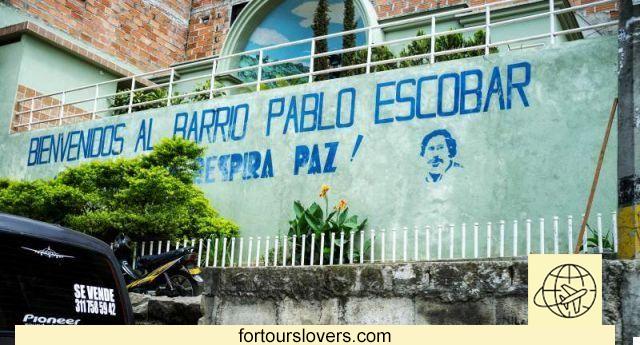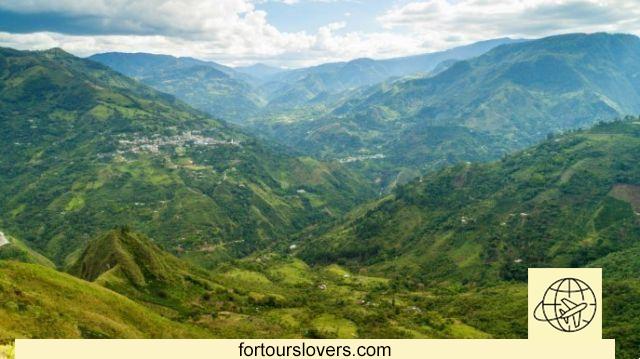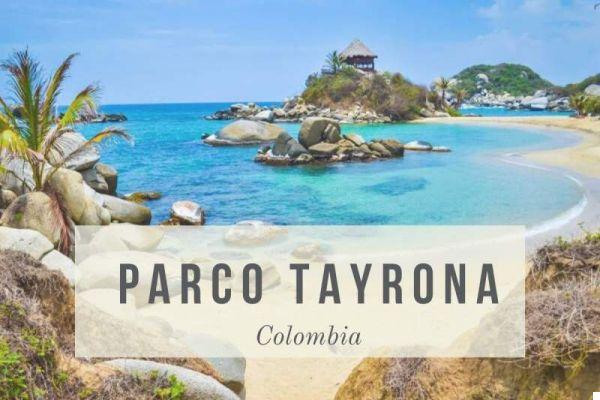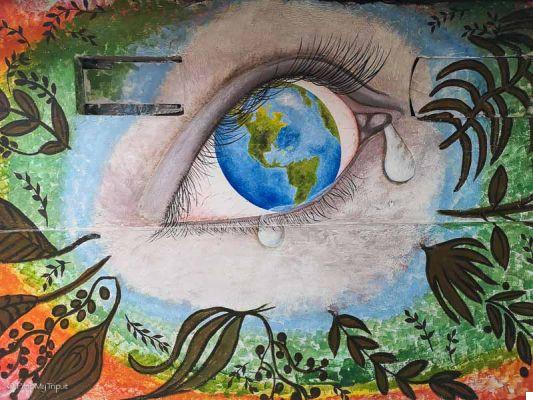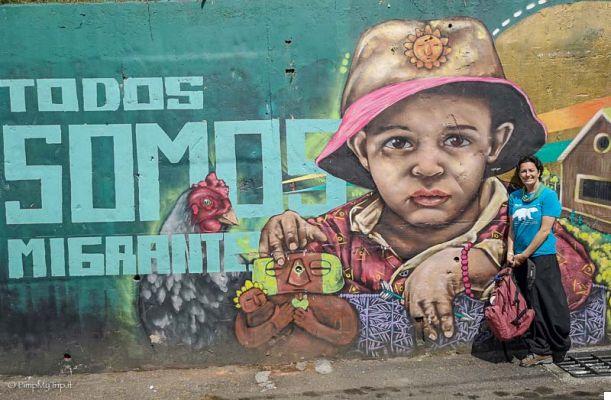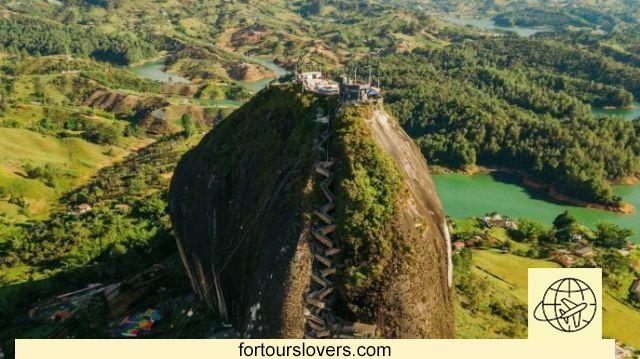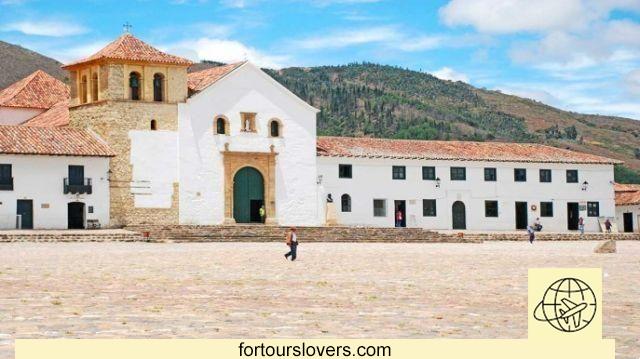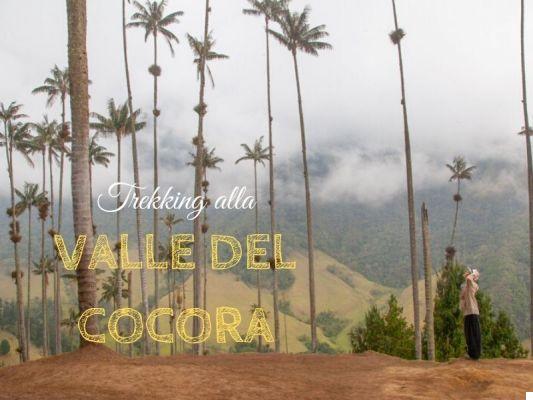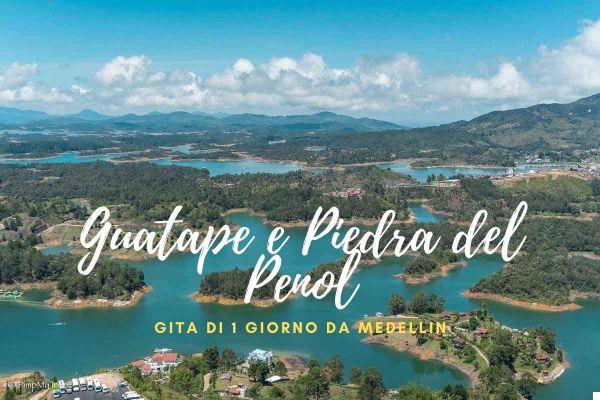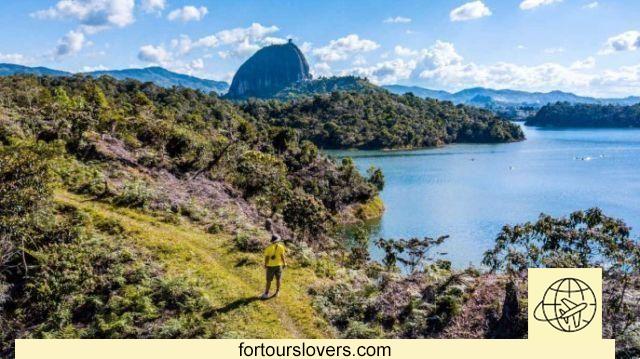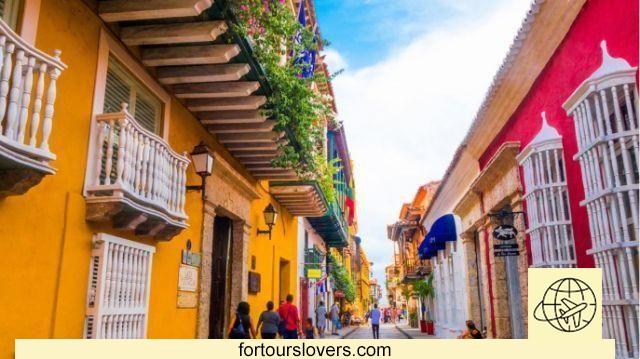Our days in Medellìn were one of the best parts of our trip to Colombia. Those were days filled with interesting things to do and see, including various coffee tours.
As the third largest producer in the world, there are so many coffee tour in Colombia and this post will give you a summary of my visit to finca D'Arrieros to help you understand what a coffee tour should be like and to help you choose the right one.
Caution: unlike many do, I have chosen to do THIS COFFEE TOUR from Medellìn instead of in the Eje Cafetero area. I'll explain below Why.
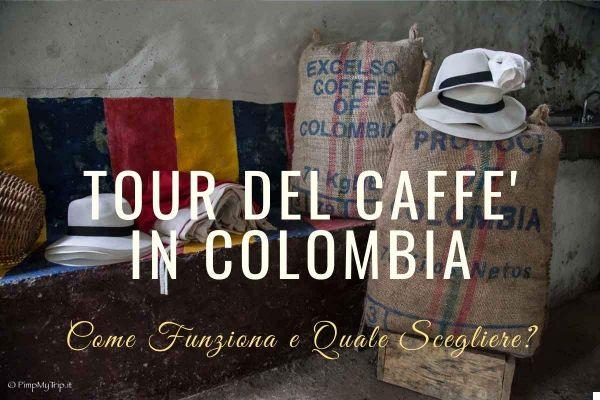
Lush valleys and rainforests set against the backdrop of the Andean Range. Coffee trees loaded with red berries that stretch as far as the eye can see. There is no doubt: Colombia is the land of coffee!
I love coffee (and I think I'm not the only one). So, when planning my trip I absolutely wanted to include a visit to a finca: I have done a lot of coffee tours in my travels in Costa Rica, Brazil, Guatemala e Tanzania.
After all the experiences, I can say with certainty that the coffee tour in colombia was the best ever.
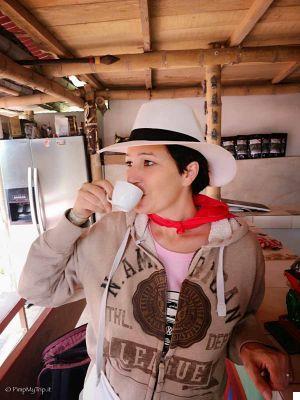
Why did I choose to do a Medellin tour?
There are three main reasons:
Primo: the Salento area is most famous for this kind of tour, for this reason (given the previous experiences) I was afraid that the tour was too touristy and too crowded. I wanted to have an experience truer.
According to: I wanted a tour to really learn, a tour that covered the whole coffee process - from growing and harvesting to tasting real Colombian coffee!
Third: I totally trust State every tour I've done with them has been a perfect experience, after all they rely on the best local agencies ever. Also this time I was right to trust: the tour was really very nice.
Because I was looking for a more authentic tour? Tradition and common sense dictate that the coffee beans are dried in the sun, carefully scattered on wooden racks, rotated from time to time with the simple movement of a rake.
Sadly today, larger facilities are increasingly relying on coal-fired silos to do the job more profitably, but that's just one of the many changes that threaten to make coffee production less authentic.
The larger companies also use machines for harvesting the beans. These machines collect all the beans, even those that have not yet reached the right degree of ripeness. In addition, the beans are not separated, the good ones from the spoiled ones (which Selena our guide calls with a chuckle "granos malos").
In short, there are many reasons why choosing a coffee tour in Colombia is not easy at all.
Coffee in the Antioch region
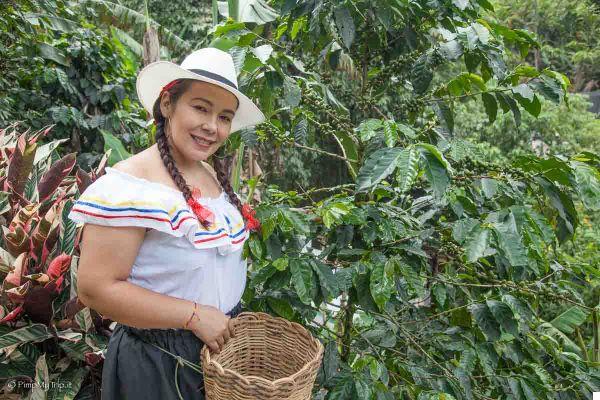
Starting from Medellín we made our way through the valleys and plateaus of the central Andes in the heart of the Antioch region. Our destination, San Sebastian de Palmitas, it is not far from the city, about 45 minutes by car, but it is immersed in the most unspoiled nature.
In fact, as we move away from Medellín, the landscape becomes infinitely greener and the air fresher. Visible in the distance were thousands and thousands of coffee trees.
Our guide to coffee farm D’Arrieros her name is Selena. A jovial girl, daughter of art, as her father and grandparents before her already produced coffee.
During the first part of the tour Selena tells us the story of coffee, the traditions of her family and the paisas (the inhabitants of the Antioquia region), the legends of black gold, how it was discovered in Africa, in Ethiopia precisely, and how he got to Colombia.
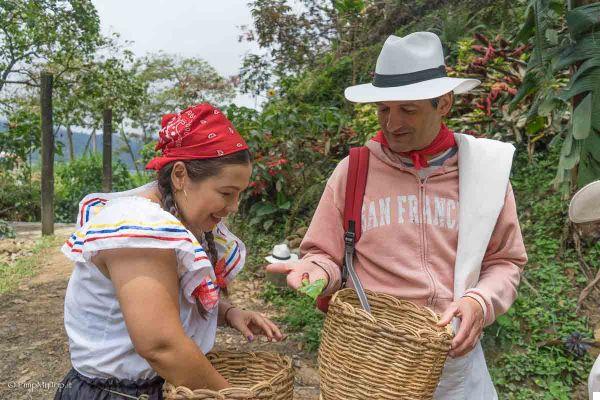
In fact, coffee plantations are not endemic to Colombia, Selena explained to us, but they were introduced by a Jesuit priest, Father Vasquez, through Venezuela. The seeds grew rapidly in the fertile land and thanks to the tropical-Andean climate in this part of Colombia, and thus Colombian coffee was born.
The coffee that is born and grows here is of quality Arabica, the best, the sweet, sweet and aromatic one, which requires particular climatic conditions, while the other quality, the Robust, stronger and more bitter, it also grows at sea level.
For years, Colombia has produced coffee only for export to Europe, without making use of it internally.
The Antioquia department, which has Medellín as its capital, is not considered a formal part of the coffee region. But the area where Selena's finca is located (or rather Don Carlos's finca) has perfect conditions and an elevation high enough to have the ideal conditions for coffee.
Antioquia's first export farm started operating more than 200 years ago, and coffee has since become an important industry in Antioquia as well. Now, with over 90.000 coffee shops spread across the territory, the Antioch region makes its contribution to Colombia as the world's largest exporter of Arabica beans.
Antioquia is home to thousands of small cafes, each with an average of 2 hectares of land. About 600.000 families live on the production and trade of coffee. There are two main harvests each year, one in October / November and a second larger crop in April / May, which provide temporary work for thousands of foragers.
The cultivation of coffee, a labor of love
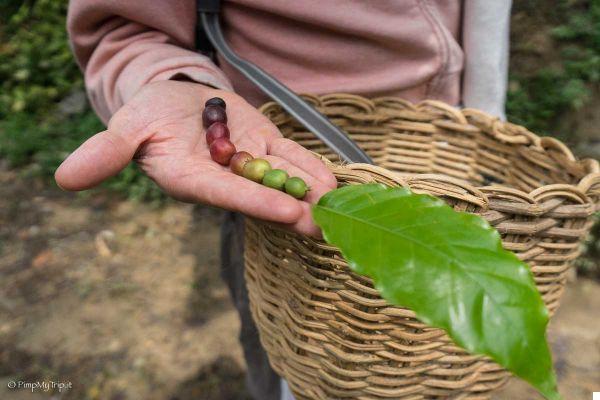
After hearing so much about the history and significance of coffee, it is time to “get a closer look” at the coffee tree and the process of harvesting, separating, drying and roasting.
With a gleeful grin, Selena made us put on the binder baskets and we made our way through a few rows of trees.
First Selena shows us the new seedlings grown. Depending on their size, they take different names: phosphorite (match), chapola (butterfly) up to almacico or the largest plant, the one that can finally be planted in the ground.
When the sapling reaches more or less the height of the waist of an adult, it already begins to produce the first beans or rather the berries (it takes about a year and a half) and a single coffee shrub can produce berries for a maximum 15 years, moving through cycles of fertility and sterility.
In Selena's finca, native non-coffee plants are planted in every available space including banana trees, guava, ginger plants and more.
These plants have several functions: provide further shadow for coffee, which results in a slower ripening process and more developed sugars.
In addition to shade, fallen leaves and fruits add to the composted organic mulch that coffee plants grow in, providing natural fertilizer.
In addition, these plants also serve to attract malevolent insects that rush to the sweeter fruits (such as bananas) and thus work to organic and natural protection.
For this no insecticides are used here!
It's amazing to see such a sustainable system in place and for that reason, Selena's finca is one of the best coffee shops in Colombia.
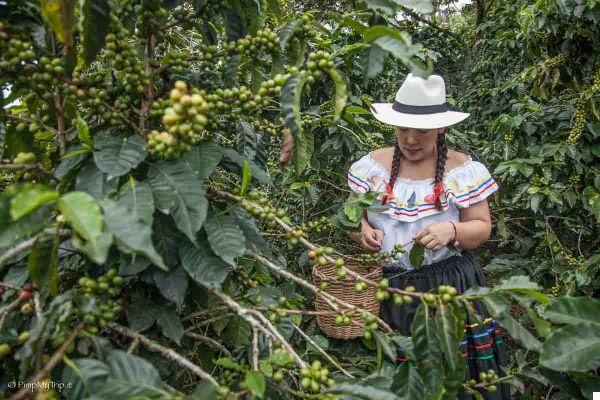
Selena then leads us to collect the beans. Here they are harvested by hand, berry by berry, bean by bean. Each expert collector can collect up to 200 kg per day.
That said, those 200kg of raw beans will produce less than 30kg of roasted coffee.
Let's try to identify ourselves in the collection work, but we don't last long. Harvesting coffee is a complicated job, especially for untrained hands. After about half an hour we arrive at the top of the hill and finally we can make coffee with our fruitful harvest (apart from me who only had 6 berries in the basket, I'm a straight back as my dad would say).
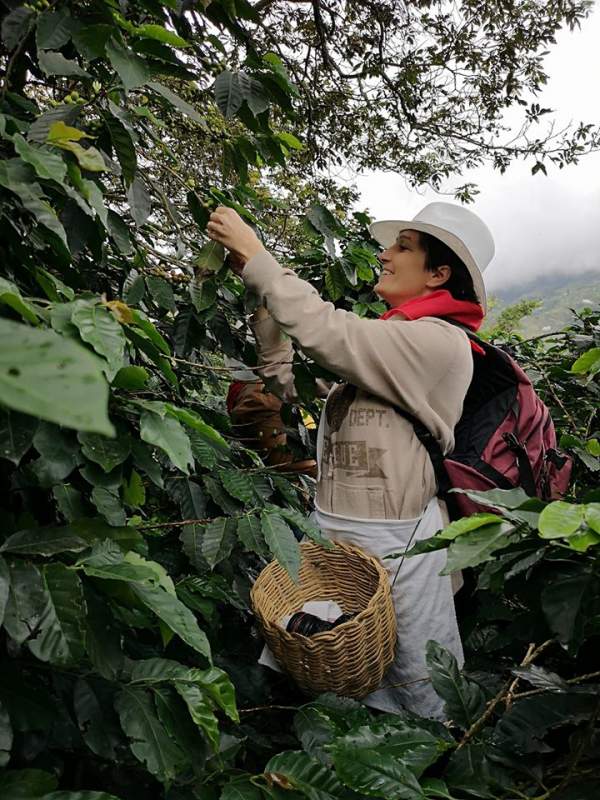
Harvesting coffee is hard work. It sounds cheesy of me, but experiencing first-hand what picking up coffee means made me realize that we should all be more thankful for our morning cup at the cafe.
The beans are then inserted into a machine that divides the actual grain from the pulp, which Selena tells us to have. 10 times more antioxidants than green tea!
Once the grains are free from the pulp, the good grains are divided manually from the “granos malos”. This process takes place by immersing the beans in a basin full of water: only the best remain on the bottom, the sick ones come to the surface and so it is possible to separate them.
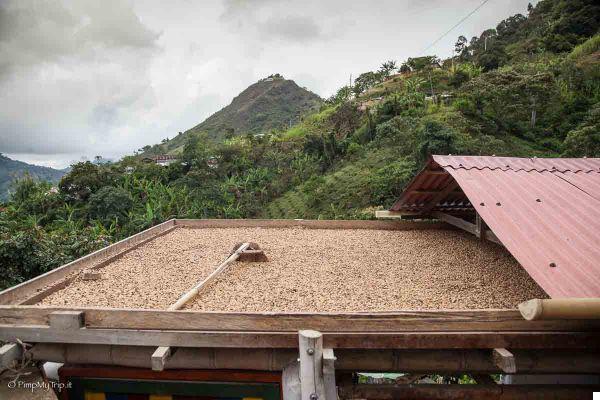
Not only that, a number of different processes are used to sort the beans by size, weight and density. The best grains are left to ferment for 16-20 hours, with their parchment (film, coating that is very sweet to the taste, and which they call "honey"), before proceeding with their drying.
Unlike some farms that discard honey, Selena uses it to make a sweet drink, mixed with ice - a thirst-quenching and delicious drink and one wonders why other places don't use it.
After drying (strictly in the sun!) the beans are ready for roasting.
The perfect cup of Selena
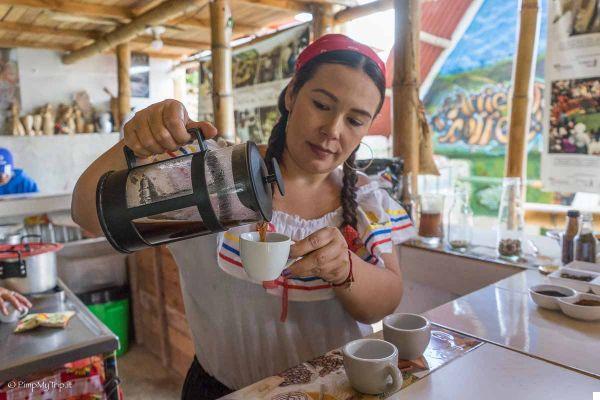
“A good coffee does not need sugar. Bad coffee, on the other hand, doesn't deserve it. " Selena says as we prepare to taste the various types of coffee.
On this tour it was my destiny to taste more cups of coffee than I could keep track of. I think I drank at least 6 or 7 cups of it before giving in to the tachycardia that occurs as soon as I exceed my body's tolerable level of caffeine.
While we are tasting the coffee, Selena talks to us about the various stages of roasting. The phases are 4: low, medium, medium high and high.
Le better roasts are medium and medium-high and the degree depends on the amount of humidity that remains in the bean: if an unroasted bean has a percentage of humidity of 12%, roasting reduces it to 1 and 2 in the case of high roasting, from 8 to 3 in medium roasts.
Selene also shows us the roasted beans in the different phases. Medium roasted coffee is a light brown that darkens as the roast increases.
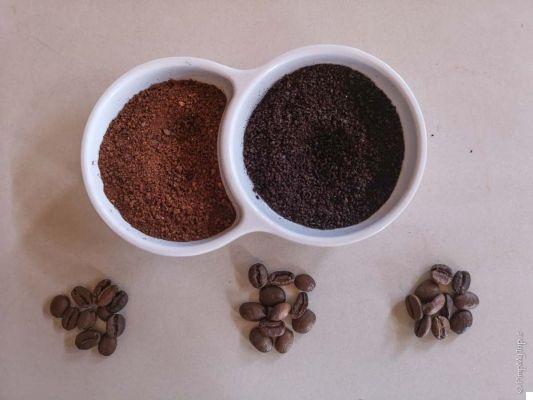
Highly roasted coffee, in addition to being stronger in flavor, has less caffeine and causes stomach cancer, so be careful! Selena tells us that each pack of coffee should have the degree of roasting indicated on the pack. Avoid high roasting!
Our tour ends with a typical Colombian lunch (before yet another cup of coffee): the Fiambre. It is a dish wrapped in plantain leaf with meat, eggs, rice, potatoes and sausage!
Practical information on the coffee tour from Medellín
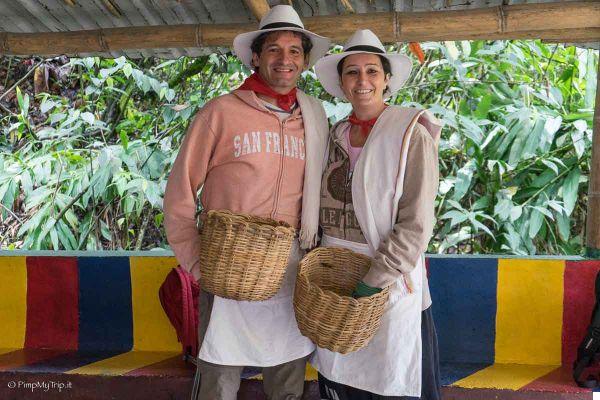
Cost: 50 € for the walking tour; or € 69 for the horseback tour
What to expect: a day of exploring the plantation, learning about the coffee making process and, of course, various cups of coffee
freshly made Colombian (try the cherry, my favorite!).
Tours are offered in English and Spanish. Typical Colombian lunch included. Round-trip transportation from your hotel in Medellín.
Opening Hours: Tours are offered every day. In addition to the classic tour, you can also choose the option on horseback!
⇒ You can BOOK THE TOUR or get more INFORMATION AT THIS LINK
Best places to take a coffee tour in Colombia
In addition to what I did (and on which, having participated, I can guarantee), there is an offer of coffee tour in Colombia really huge and it can be hard to find the one that's right for you.
But believe me, if you love coffee you just can't miss this experience.
So I looked for other tours that could be for you (even with the advice of friends) and that they are the best in the whole country.
1 - Finca El Ocaso
Il Salento it's probably the most visited area in the Colombian coffee region, so it's where most people end up taking a coffee tour. There are excellent tours available in and around the city and the Finca El Ocaso it's one of these.
Please note:: Finca El Ocaso tour is definitely a great tour, but it is very well known and therefore, one of the busiest!
The tour takes place in a delightful traditional farm and offers a comprehensive introduction to the Colombian coffee growing and production process.
2 - National Coffee Park
Il National Coffee Park is a theme park owned and operated by the National Federation of Coffee Growers of Colombia, located just outside the city of Armenia.
With interactive exhibits focusing on the history and culture of coffee, a coffee museum, coffee-themed food stalls, as well as roller coasters, drains and bumper cars, the park is the perfect place to discover the history of coffee and have fun at the same time.
Perfect if you are traveling with children, the Parque Nacional del Café is a bit surreal place - really, would you have ever imagined there could be a theme park for coffee ?! - but it's a fun way to get to know coffee from a totally different perspective.
3 - La Victoria coffee plantation
La Victoria Coffee Plantation it's a delightful, traditional coffee farm just outside Coin, at the foot of the Sierra Nevada de Santa Marta mountains, on the Colombian Caribbean coast.
It also boasts some of the oldest machinery of any farm in Colombia, and their unique tour explains how their old but effective collection system works, entirely through water and machinery dating back to the Queen Victoria era (hence the name).
4 - Tasting tour in the La Candelaria neighborhood in Bogota
One of the best coffee tours in Bogota is this excellent tasting coffee tour, which takes you to the best independent cafes in the city, explaining in the process the culture behind Colombian coffee.
The guides are passionate coffee lovers and their information - along with that of the baristas you need - will prove invaluable, especially if you're new to the coffee scene.
5 - Finca Don Eduardo
The owner, Don Eduardo is actually a transplanted Englishman.
After running coffee tours for over 6 years he has developed an incredible reputation and most of the other people have been there through word of mouth advice.
So that's it: you can stop wondering what to do in Salento because you have found one of the best coffee tours!
Don Eduardo in Salento manages the Plantation House Salento. Tours in English are offered daily (except Sundays) at 9am, while a tour in Spanish is also offered at 15pm.
You also made a coffee tour in Colombia? Were you satisfied? Tell me about your experience in the comments below!




